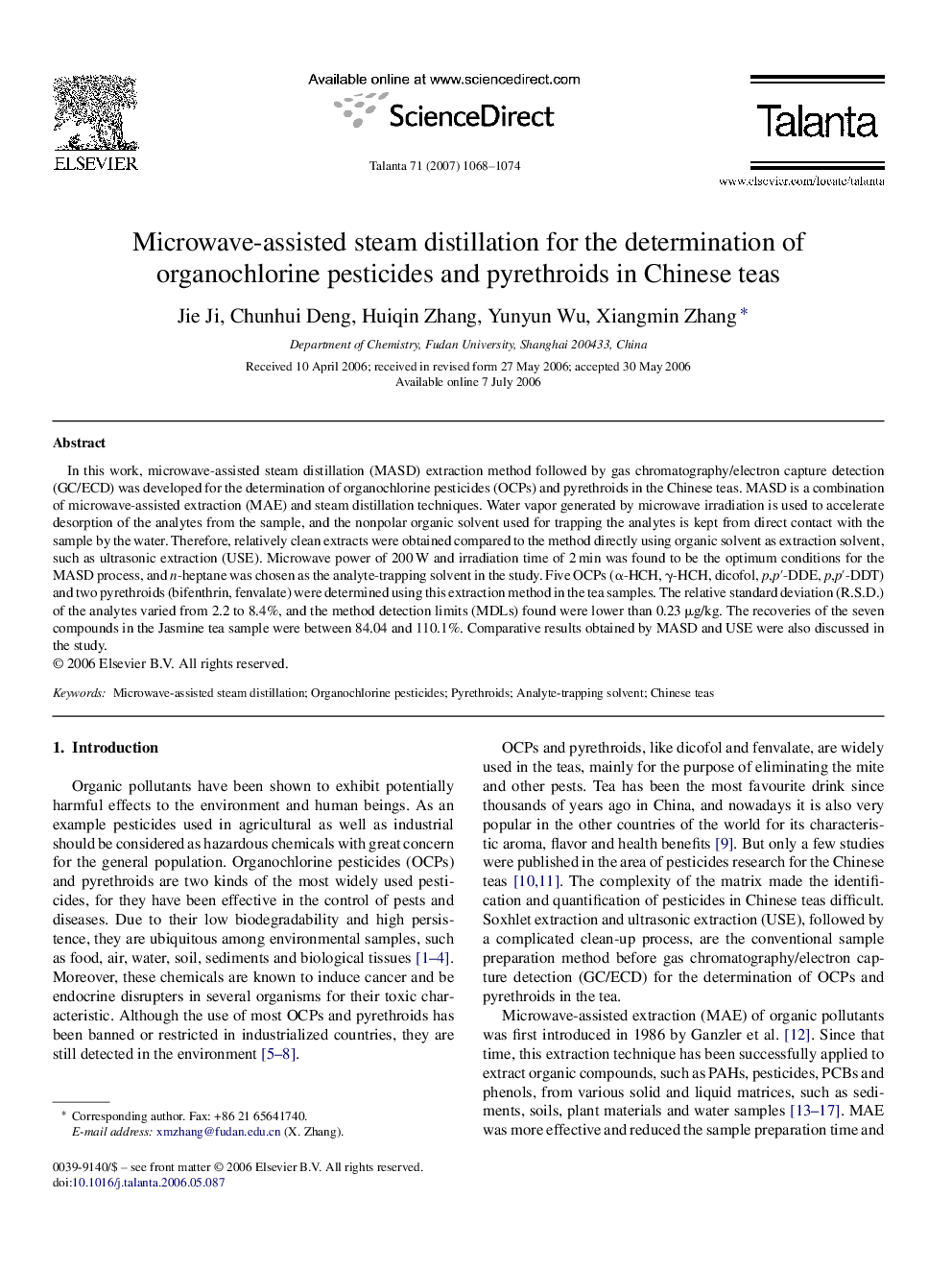| Article ID | Journal | Published Year | Pages | File Type |
|---|---|---|---|---|
| 1246115 | Talanta | 2007 | 7 Pages |
In this work, microwave-assisted steam distillation (MASD) extraction method followed by gas chromatography/electron capture detection (GC/ECD) was developed for the determination of organochlorine pesticides (OCPs) and pyrethroids in the Chinese teas. MASD is a combination of microwave-assisted extraction (MAE) and steam distillation techniques. Water vapor generated by microwave irradiation is used to accelerate desorption of the analytes from the sample, and the nonpolar organic solvent used for trapping the analytes is kept from direct contact with the sample by the water. Therefore, relatively clean extracts were obtained compared to the method directly using organic solvent as extraction solvent, such as ultrasonic extraction (USE). Microwave power of 200 W and irradiation time of 2 min was found to be the optimum conditions for the MASD process, and n-heptane was chosen as the analyte-trapping solvent in the study. Five OCPs (α-HCH, γ-HCH, dicofol, p,p′-DDE, p,p′-DDT) and two pyrethroids (bifenthrin, fenvalate) were determined using this extraction method in the tea samples. The relative standard deviation (R.S.D.) of the analytes varied from 2.2 to 8.4%, and the method detection limits (MDLs) found were lower than 0.23 μg/kg. The recoveries of the seven compounds in the Jasmine tea sample were between 84.04 and 110.1%. Comparative results obtained by MASD and USE were also discussed in the study.
